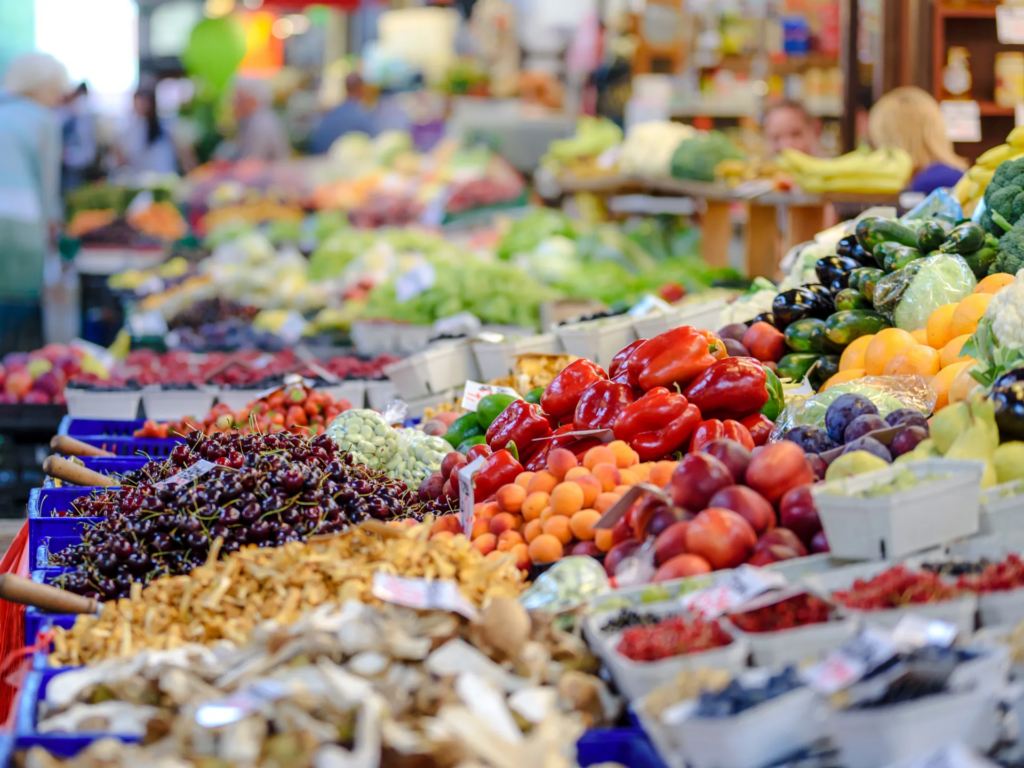Much of the fresh produce found in your local grocery store has been sprayed with a variety of pesticides, herbicides and fungicides during the growing process. But consuming those common chemicals regularly may come with negative consequences to your health. The chemicals are used to increase crop yields. They do this by decreasing threats to the crops, such as insects and weeds.
But many of the chemicals used on crops in the US have been banned in other areas of the world because of potential health risks. These chemicals have been shown to contribute to hormone imbalances, reproductive problems, impaired cognitive function, neurological problems and even cancer. Children are at greatest risk of toxicity from pesticides, but adults are being impacted as well.
Fresh fruits and vegetables contain vital nutrients and play an important part of a healthy lifestyle. So, while you should not stop consuming fresh produce, there are things that you can do to minimize pesticide exposure. This assures that you are getting the benefits of the produce you eat, with less risk to your health.
Things you can do to minimize pesticide exposure
Buy organic produce when possible
Organic produce is more accessible than ever before. Most large grocery store chains now carry a variety of organic produce. And the prices for organic produce have come down slightly over the past several years as well. There are huge benefits to consuming all organic when possible. People who have switched to organic typically experience a rapid decrease in pesticide levels found through urine testing. Many have also seen an improvement in fertility and reduced risk in chronic illnesses such as type 2 diabetes and cancer. Of course, organic produce is often more expensive than conventional produce. This will make a diet of all organic produce less than affordable for some. The good news is that there are simple things you can do with conventionally grown produce that can reduce your exposure to pesticides.
Choose the cleanest produce
Each year, the Environmental Working Group releases its “Clean fifteen” produce list. Through extensive testing, these fruits and vegetables show low levels of pesticides compared to other fruits and vegetables. EWG’s testing analysis has shown that 70% of non-organic, fresh produce being sold in the U.S. contains the residue of potentially harmful chemicals. EWG’s “Clean Fifteen” tested with the lowest levels of pesticide residue. In fact, 70% of the produce in this category showed no pesticide residue levels at all.
EWG.org’s Clean fifteen fruits and vegetables (2021)
- Avocados
- Sweet corn
- Pineapple
- Onions
- Papaya
- Sweet peas (frozen)
- Eggplant
- Asparagus
- Broccoli
- Cabbage
- Kiwi
- Cauliflower
- Mushrooms
- Honeydew Melon
- Cantaloupe
You can feel comfortable purchasing and eating conventional varieties of these fruits and vegetables.
Choose organic versions of the “Dirty dozen”
EWG’s guide to pesticides in produce also includes the fruits and vegetables that contain the highest amounts of pesticide residue. 90% of the produce on this list tested positive for containing residue from two or more different pesticides. Many of the greens on this list tested positive for containing residue from as many as twenty different pesticides. Buying organic varieties of these fresh fruits and vegetables can significantly reduce your exposure to pesticide residue.
EWG.org’s “Dirty dozen” (2021)
- Strawberries
- Spinach
- Kale, collard and mustard greens
- Nectarines
- Apples
- Grapes
- Cherries
- Peaches
- Pears
- Bell and hot peppers
- Celery
- Tomatoes
What happens if you can’t avoid eating conventional varieties of the produce on the “Dirty dozen” list? Don’t worry, there is something that can be done to reduce the amount of pesticide residue found on these conventionally grown fruits and vegetables!
Wash all produce thoroughly
While there are fruit and veggie washes that you can purchase at your local supermarket it is best to save your money and skip them. There are two other ways to clean your produce to reduce pesticide residue that are more effective…and cost much less! Studies have shown that washing produce under cold running water reduced levels of pesticide residue on 9 of the 12 pesticides tested. This method of cleaning produce was more effective than expensive produce washes.
But there is one simple soaking solution that works even better than plain water! And most likely you have the most important ingredient right in your cupboard. A recent study showed that soaking produce in a baking soda solution showed the greatest reduction of pesticide residue, both on top of the skin and underneath the skin!
Fill your sink or a large bowl with cold water. Add a teaspoon or two of baking soda and add your produce. Allow the produce to soak for 2-3 minutes and rinse with cold water. Use a salad spinner to shake water out of greens or pat the produce dry with a lint free towel. Clean your produce before you are ready to eat it.
You have the power to take your own health in your hands. You can easily reduce the levels of pesticides you and your family are exposed to from the produce you eat. Simple swaps and quick cleaning techniques are an easy way to help protect your health!







